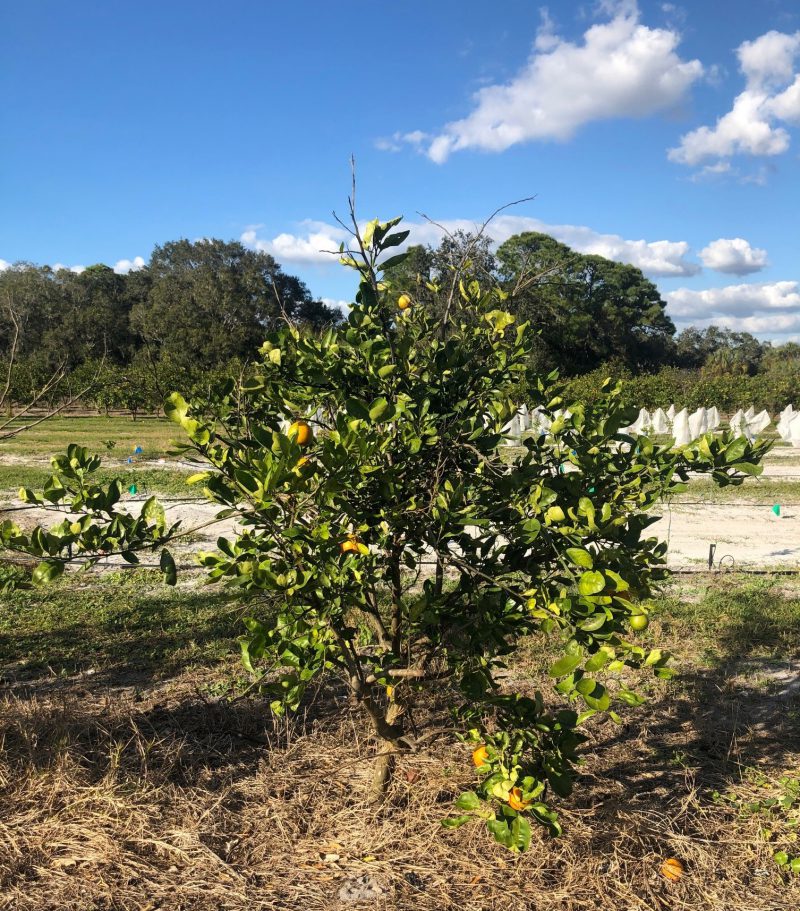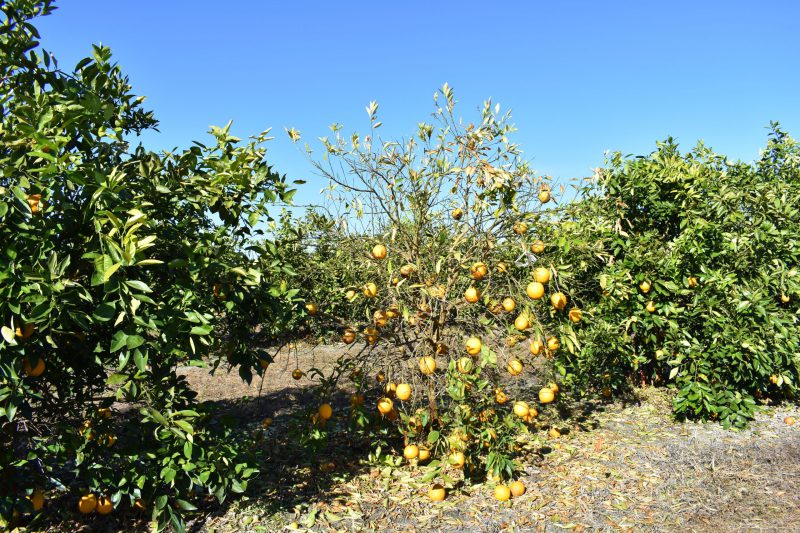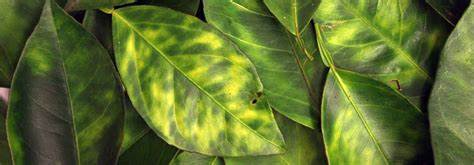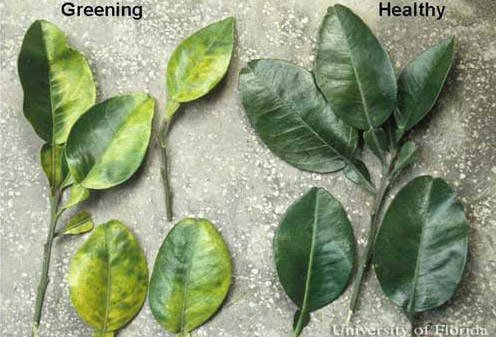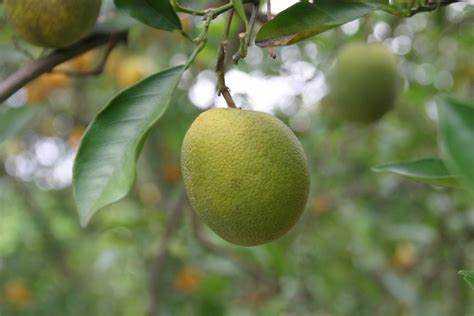Scouting for citrus greening disease or huanglongbing (HLB) should be an essential practice of citrus growers in our area. The symptoms of this disease can be found year round, but they are most visible now through March. Citrus greening affects all varieties of citrus and is widespread throughout the industry in South Florida. Disease incidence in the Panhandle is low, therefore, scouting and infected tree removal is still a valuable production practice.
Citrus greening is a bacterial disease caused by the bacteria Candidatus Liberibacter. The bacterium is spread from tree to tree by an insect known as the Asian citrus psyllid. Psyllids spread the disease by feeding on infected trees and moving on to non-infected trees. Once a tree is infected, there is little hope for survival as there is no cure for citrus greening.
–
HLB Symptoms
Symptoms of citrus greening may not always be clear and can be difficult to distinguish from other tree problems. When scouting for greening, look for trees that do not appear normal and examine these trees carefully. A tree infected with citrus greening will appear unhealthy with discolored leaves, a thin canopy, and reduced fruit production.
Early symptoms of citrus greening include yellowing of the leaf veins and a blotchy mottle pattern. These symptoms can be easily confused with nutrient deficiencies. However, nutrient deficiencies tend to have a symmetrical pattern on each side of the leaf vein whereas citrus greening is asymmetrical.
On severely infected trees, leaf drop, shoot die back, and fruit drop occurs. Fruit may be small, misshaped and/or have an abnormal color change. Fruit may also have an off flavor.
Scouting
Scouting for citrus greening should be done at least four times a year, or more in areas known to have infected trees. The symptoms are most visible through the fall and winter months, but can be seen year round. As trees begin to flush in the spring, scouting becomes more difficult because new leaves do not typically express symptoms and older, symptomatic leaves become hidden in the tree canopy.
Methods of scouting include visual inspection of trees by walking through groves or riding on all-terrain vehicles (ATVs). Walking the grove will allow for the most thorough inspection, however size of the trees and acreage will determine the most practical method for a grower.
Any suspect trees should be marked with flagging tape. On the flagging tape, include the date and the person scouting’s name. After a row is scouted, marking trees on each end of the row with flagging tape will assist with relocating trees later.
Diagnosis
Citrus greening cannot be diagnosed by symptoms alone. Suspect trees that have been flagged should be sampled and sent to the lab to be positively identified by the polymerase chain reaction (PCR) method. There are several labs throughout the state that are able to receive and diagnosis samples. Another method of detection being used more recently are scent detecting dogs.
Diagnostic Labs
UF/IFAS North Florida Research & Education Center
155 Research Road
Quincy, FL 32351, 850-875-7140
Southern Gardens Diagnostic Laboratory
111 Ponce de Leon Avenue
Clewiston, FL, 33440, 863-902-2249
Florida Division of Plant Industry
P.O. Box 147100,
Gainesville, FL, 32614, 1-800-282-5153
UF Plant Diagnostic Center
Building 1291, 2570 Hull Rd.,
Gainesville, FL 32611, 352-392-1795
Management
Unfortunately, there is no cure for citrus greening. Fortunately, citrus greening disease incidence in our area is low. Through a proactive approach to dealing with the disease via scouting, early detection, removal of infected trees, and controlling the insect vector, growers can reduce the incidence and spread of the disease.
–
For more information on this topic, use the links to the following publications:
UF/IFAS Citrus REC HLB
Scouting for Huanglongbing (HLB; Citrus Greening)
Grower Experiences: Citrus Greening
- Discover the Sweet Potential of Persimmons at the UF/IFAS Persimmon Field Day – October 23 - September 12, 2025
- 2025 Big Bend Pesticide Safety Training Series – September 8-11 - July 18, 2025
- Mechanical Pruning of Citrus Groves - March 7, 2025

